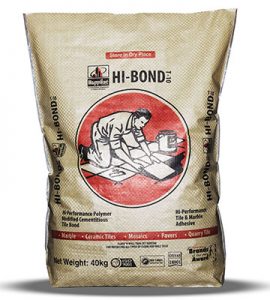
Tile installation is a transformative process that can elevate the aesthetic appeal of any space. Achieving impeccable results hinges on mastering the art of tile adhesion, with a key focus on optimal bond timing. In this article, we will explore the essential strategies to ensure quality outcomes in tile installation by maximizing the timing of the bonding process.
Understanding Tile Installation Precision
Before delving into the nuances of bond timing, it’s crucial to grasp the concept of tile installation precision. This involves meticulous planning, proper surface preparation, and a keen eye for detail. The success of any tiling project rests on achieving a secure and long-lasting bond between the tile and the substrate.
Factors Influencing Bonding Times
Several factors influence the bonding times of tiles, and recognizing these elements is fundamental to achieving quality results. The type of adhesive used, environmental conditions and the porosity of the substrate all play crucial roles. Temperature and humidity levels can impact the curing process, making it essential to adapt strategies accordingly.
Strategies for Tile Adhesion
- Choose the Right Adhesive: Selecting the appropriate adhesive for your specific tile and substrate is the first step in optimizing bond timing. Different adhesives have varying curing times, so it’s essential to follow manufacturer guidelines for the best results.
- Surface Preparation is Key: A smooth and clean substrate provides a better bonding surface. Ensure that the surface is free from dust, debris, and any contaminants that may hinder adhesion. Properly level and prime the substrate as needed.
- Test Bonding Times: Conduct small-scale tests to determine the bonding time optimization for your specific conditions. This involves applying adhesive to a few tiles and assessing when it reaches the ideal tackiness for bonding.
- Work in Sections: Rather than applying adhesive to the entire surface at once, work in manageable sections. This allows for better control over bonding times and ensures that each tile is placed in the optimum timeframe.
Maximizing Tile Bond Performance
To achieve the best possible bond performance, it’s essential to pay attention to the entire installation process. Here are some additional tips to enhance the quality of your tile installation:
- Use the Correct Trowel Size: The size of the trowel used for spreading adhesive affects the amount applied, influencing bonding times. Refer to manufacturer recommendations to choose the right trowel for your specific tile and adhesive.
- Maintain Consistent Joint Spacing: Proper spacing between tiles allows for expansion and contraction, reducing the risk of tile displacement over time. Use spacers to maintain consistent joint widths for a professional finish.
- Regularly Clean Excess Adhesive: As you work, periodically clean any excess adhesive that may squeeze out from between tiles. This not only improves the aesthetics but also prevents adhesive from interfering with neighboring tiles.
Conclusion
In the world of tile installation precision, mastering bond timing is a critical skill. By understanding the factors influencing bonding times and implementing precise strategies, you can ensure quality results in tiling projects. Remember, the key lies in choosing the right adhesive, preparing the surface diligently, and working with a keen awareness of optimal bonding times. Maximize your tile bond performance and transform your spaces with flawless tile installations.
Also Read: How to Take Care of a Domestic Refrigerator? 5 Important Tips

Crafting words to inspire, engage and motivate. 10+ years of content writing, SEO, digital marketing and blogging experience. Ready to help your brand reach its potential!

